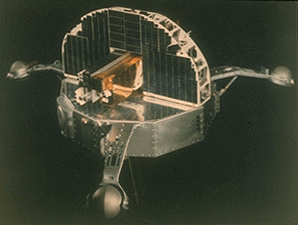|
|
OSO-6

OSO-6 operated from August 1969 until January 1972. The orbital period was
~ 95 minutes, with the orbital day lasting ~ 60 minutes of each orbit. The
spin rate was 0.5 rps.
The hard X-ray detector (27-189 keV) was a 5.1 cm2 NaI(Tl) scintillator,
collimated to 17 deg x 23 deg FWHM. The system had 4 energy channels (separated
27-49-75-118-189 keV). The detector spun with the spacecraft on a plane
containing the Sun direction within +/- 3.5 degrees. Data were read with
alternate 70 ms and 30 ms integrations for 5 intervals every 320 ms.
Also on board was a NRL experiment meant primarily to monitor solar flares.
This X-ray detector operated from August 1969 until January 1972. The NaI(Tl)
scintillator had a frontal area of 1.3 cm2 and was 2.54 cm thick. The
detector
operated during daylight periods only (~ 70% of each 99.8 minute orbit). It
had 6 energy channels covering 23-82 keV, and an integral channel for >82 keV
(out to about 500 keV). Spectra were accumulated for 2.56 s.
Intended primarily to study bursts and flares from the Sun, the instrument
was also used to search for hard X-ray coincidences with known gamma-ray
bursts (primarily those seen by the Vela satellites). Three such
coincidences were observed. The NRL instrument, when combined with data
from the OGO-5 satellite, confirmed 5 hard X-ray bursts (they detected 12
altogether).
[Gallery] (http://heasarc.gsfc.nasa.gov/docs/heasarc/missions/images/oso_images.html)
[Publications] (http://heasarc.gsfc.nasa.gov/docs/heasarc/missions/biblio/oso_biblio.html)
|
